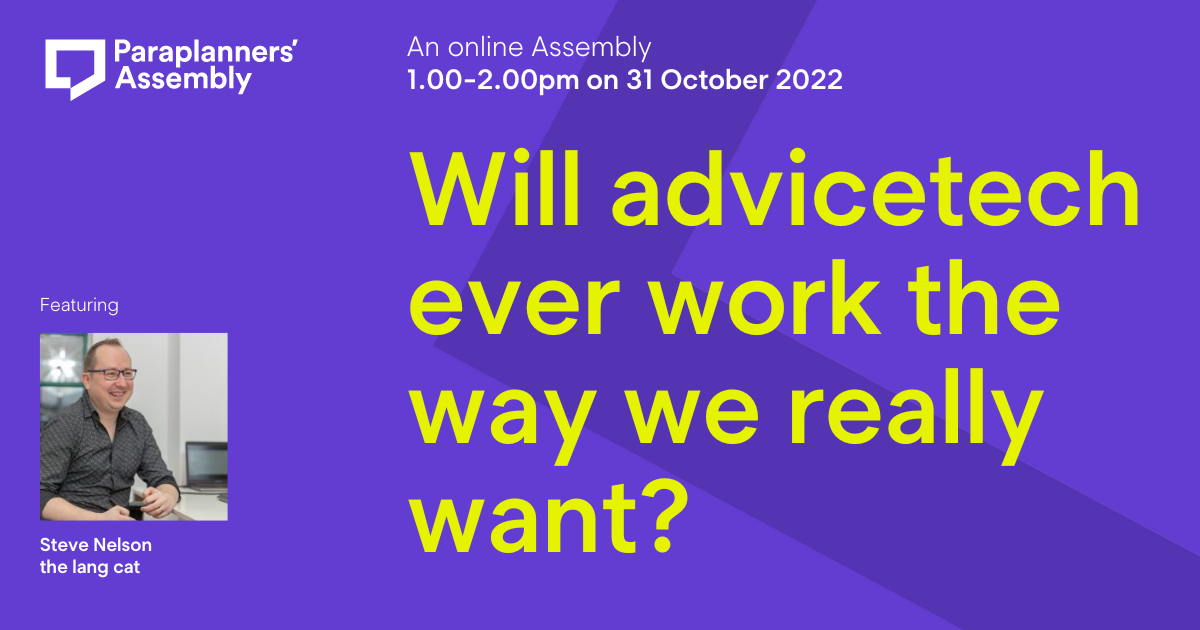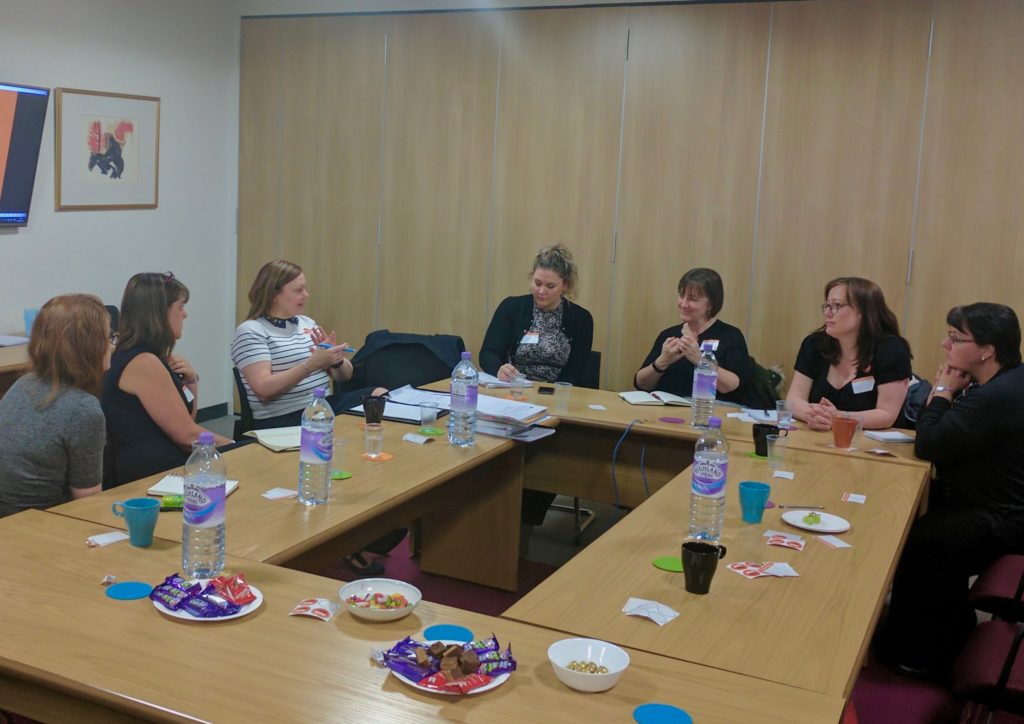Brian Radbone, Technical Counsel at Transact, joins Richard to unpack the post-lifetime allowance (LTA) world and its consequences for paraplanners.
In a bite-sized Assembly lasting less than eight minutes, Brian explores transition certificates, new lump sum allowances, and why timing is everything when it comes to crystallising benefits. Plus he discusses the importance of understanding provider restrictions.
If you’re in the market for a post-LTA primer but are pushed for time, this Assembly is ideal.
Canaccord Genuity’s chief investment officer, Tom Becket, joins Richard Allum for a primer on fixed interest investments that is ideal for paraplanners wherever you are in your career.
During a 20-minute conversation, Tom explains the basics of bonds and gilts, how interest rates affect their values, and how the recent spikes in interest rates have affected returns and revived annuities – putting an end to years of fixed interest investments’ appearing to be ‘uninvestable’.
The likelihood of lower inflation combined with potential interest rate cuts is positive for fixed interest markets.
But Tom is keen to stress that all bonds aren’t created equal and he offers his thoughts on where – depending on the risk appetite of your clients – opportunities might lie across a spectrum of fixed interest investments, from government debt to high-yield credit.
For paraplanners looking to get a handle on this significant but possibly misunderstood asset class, this bite-sized Assembly offers valuable insights to help navigate the fixed interest landscape.
In a special bite-sized Assembly, Transact’s Stuart Fleat explains how model portfolio services offered by discretionary investment managers are able to accessed on platforms like Transact.
In less than six minutes, Stuart explains how platforms and MPS providers are able to handle access to client accounts and data securely and confidentially, how portfolio rebalancing works in practice, practical considerations around capital gains tax, and how clients are invested into the model portfolios.
Rebalancing portfolios is a familiar task for paraplanners. Periodically – often after a client’s annual review – we make sure that fund allocations are tweaked so they’re true to original investment goals.
But how does rebalancing work from a platform’s point of view?
During this second episode in a three-part series on life behind the scenes at platforms, Transact’s national sales manager, Stuart Fleat, walks you through the rebalancing process.
In just four minutes, Stuart explains how a platform calculates and processes sells and buys, how long it takes and how to check tax impacts upfront.
Listen now
Missed out on the first episode?
Catch up now with the first episode in this bite-sized Assembly series.
Part 1: A bite-sized Assembly on what happens when you place a trade on a platform. In just 5 minutes and 23 seconds, Transact’s Glen Sweet lifts the lid on what happens behind the scenes at a platform.

Is advicetech getting any better at helping advice professionals deliver a great advice experience to clients? Or are we destined for a future in which we struggle to get platforms, services and software to work the way we really want?
That’s what platforms, pensions and investments consultancy, the lang cat, wondered. That’s why they spoke to paraplanners, advisers and administrators for their latest report – A Fragmented World – published late last month.
The report combines findings from in-depth interviews with nearly 40 financial planning firms with responses to a comprehensive online survey completed by scores of financial advice professionals.
But will the lang cat’s findings chime with your own day-to-day experience of advicetech?
To find out, watch the replay of this online Assembly where the lang cat’s insight director, Steve Nelson, shares what they learned – and what it means for paraplanners and your use of advicetech in future.
From now on, there’s no need to visit Crowdcast to save your spot at an online Assembly. Just tap ‘Book event’ and follow the step-by-step instructions.
Broken link or duff information?
If something’s not quite right on this page, please tell us what you spotted now at our bug list.
For the first time in three years paraplanners from all over the country were able to gather for real for the Paraplanners Assembly’s Big Day Out at FarmED near Chipping Norton in Oxfordshire on 15 September 2022.
Learning objectives
We opted for a blend of small group sessions – which we called Crop Rotations – and all-together sessions.
Crop rotations: Morning
For the pre-lunch sessions, we split the Assembly into three groups: Barley, Oats and Wheat.
Participants were assigned to a group and each group rotated around the three topic sessions. Conversations in each topic session were facilitated by hosts and experts. Each session lasted for 45 minutes. The topic session for rotations 1, 2 and 3 were:
What will consumer duty mean to you?
Experts: the lang cat’s Mike Barrett and Mel Holman from CATS.
The art of challenging conversations
Expert: Becca Timmins from Time to Think and Emery Little led a session on challenging conversations.
Pep up your paraplanning processes
Experts: LIFT Financial’s Jonny Stubbs and Chris Baigent-Reed from Jigsaw Tree.
After lunch, participants were assigned to a NEW group: Apples, Cherries, Pears or Plums.
That’s because we combined two groups for the session on report writing but – by the miracle of organisation – ensured each group gets a technical Q&A all to itself. So the topics for rotations 4 and 5 were:
Technical Q&A
Panellists: Les Cameron and Neil MacLeod from M&G Wealth, and Transact’s Brian Radbone and Barnett Waddingham’s James Jones-Tinsley.
Three things that get in the way of clear, compliant and client-friendly report writing
Experts: Melissa Kidd of Motem with Mel Holman from CATS.
Broken link or duff information?
If something’s not quite right on this page, please tell us what you spotted now at our bug list.
A second exploration of FE and what paraplanners can do with it.
Learning objectives
In this session we covered…
- FE’s calculators on ex-ante charges and RIY
- Account admin and archiving Bespoke report builder
- Saving a favourite list of indices and to top it all off, charts, charts, and for the fun of it, more charts
We held a Powwow in the sunniest city in Scotland on the 18th of April and welcomed paraplanners from those far flung places such as Edinburgh and Inverness, as well as gathering up a gang of locals in Henderson Loggie’s offices. The event was hosted by Colin Stewart and Susan Pringle.
Interestingly, the most notable comment was that we didn’t know there were so many of us!
We decided to split the group into two tribes to attempt to cover as many subjects as we could in the time available. Not unsurprisingly, the most requested topics included Report Writing and Risk Profiling/Capacity for Loss.

A number of attendees said they either use report writing software or are considering it. Some offered good feedback of threesixty’s new templates which are more concise and client focussed. Some firms will break their reports down into ‘strategy’ reports, where the broad financial plan is presented and these are supplemented by more focused ‘implementation’ suitability reports.
All firms used risk profiling tools, the most common being Distribution Technology. In the main, this is because many investment managers map the risk of multi-asset funds to DT’s outputs. All agreed that a risk questionnaire and results are just the starting point for a discussion about risk. We discussed the difference between risk tolerance vs capacity for loss and a few firms use cash flow forecasts to assess capacity for loss.
Both groups were interested in the options available across the region to assist with exams and keeping up to date with industry changes. Indeed, post the Powwow, several paraplanners signed up for the PFS Purely Paraplanning Conference in Glasgow on the 4th of May. The use of Twitter and the Professional Paraplanner magazine were highlighted as being good sources of information, especially with CPD being available. Several providers were also pointed out as having paraplanning specific sites, including our supporters. The Powwow Big Tent allows users to post questions to be answered by other paraplanners and came highly recommended.
With regards to exams and techniques, many felt that that the text books were not enough in isolation and each used additional resources such as Wizard Learning, Redmill Advance and Brand Financial Training, with some having engaged with Expert Pensions to provide structured plans for AF exams. Old Mutual have also offered classroom courses. Unfortunately, it’s been very much a case of finding out what’s available through word of mouth.
We also touched on what a good review process involved. We all agreed that reflecting back on the client’s original objectives was paramount, and that having a process in place to ensure these were handled correctly was vital. There was a mix across the group of how involved paraplanners were with regards to attending client meetings. It was agreed that as most are employed in small IFA firms, time constraints mean that it isn’t always feasible to attend a client meeting.
Finally, we discussed the benefits or otherwise of paraplanners holding CF30. A few attendees have CF30, primarily for ‘locum’ reasons – the client would still be able to get advice from the firm in the adviser’s absence. Some argued that CF30 makes you a better paraplanner as you develop empathy with the clients through the advice process.
Edinburgh and Glasgow will be up next.

